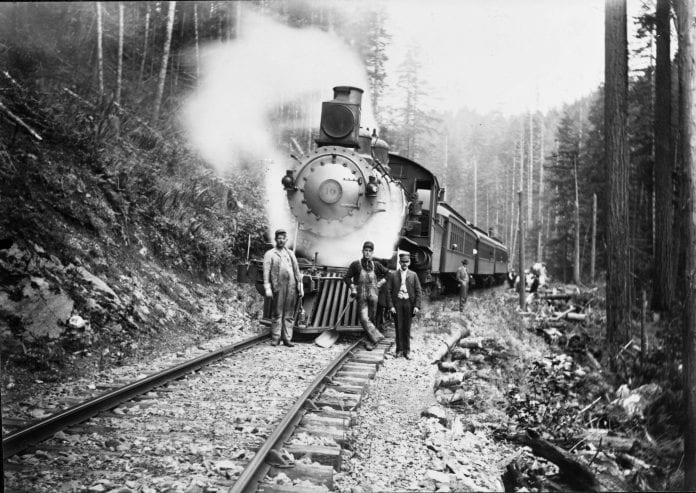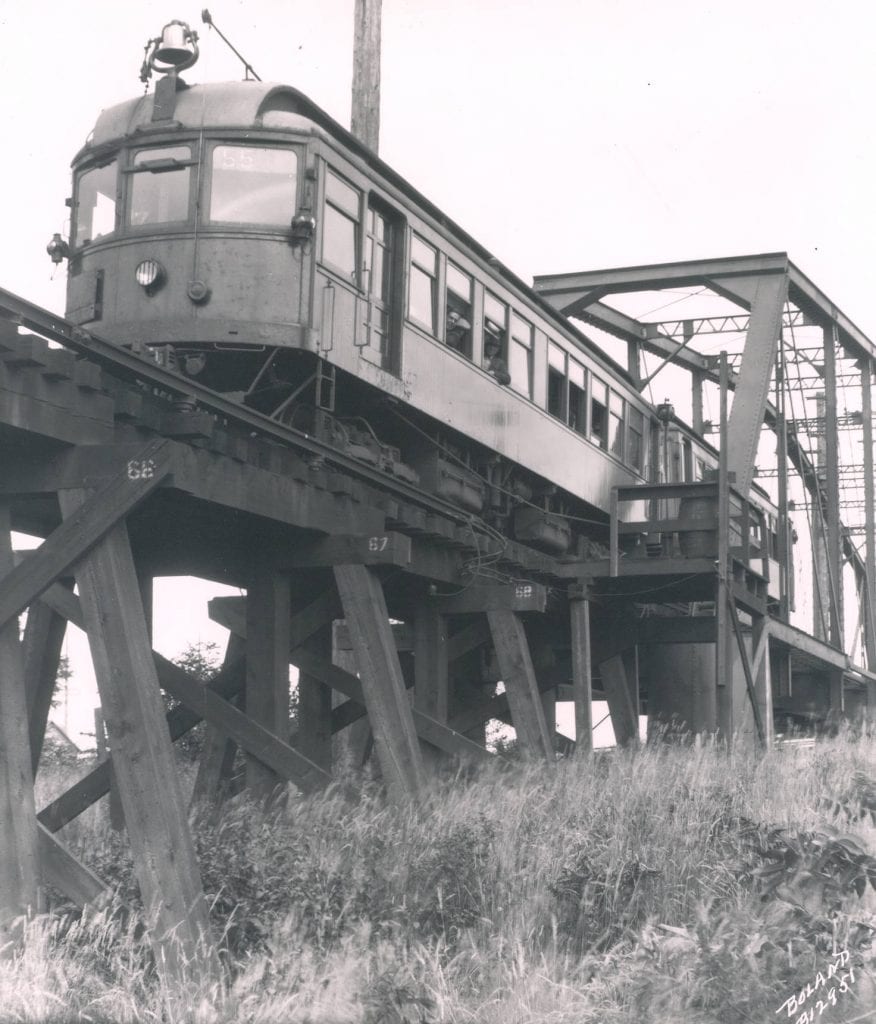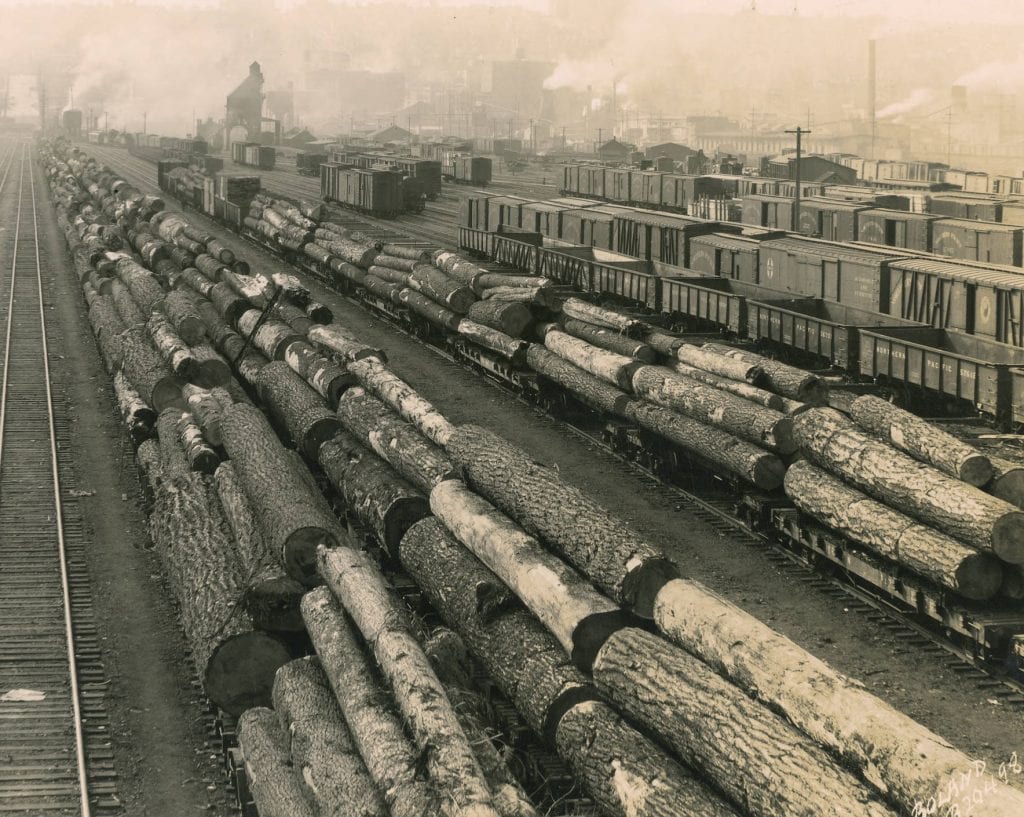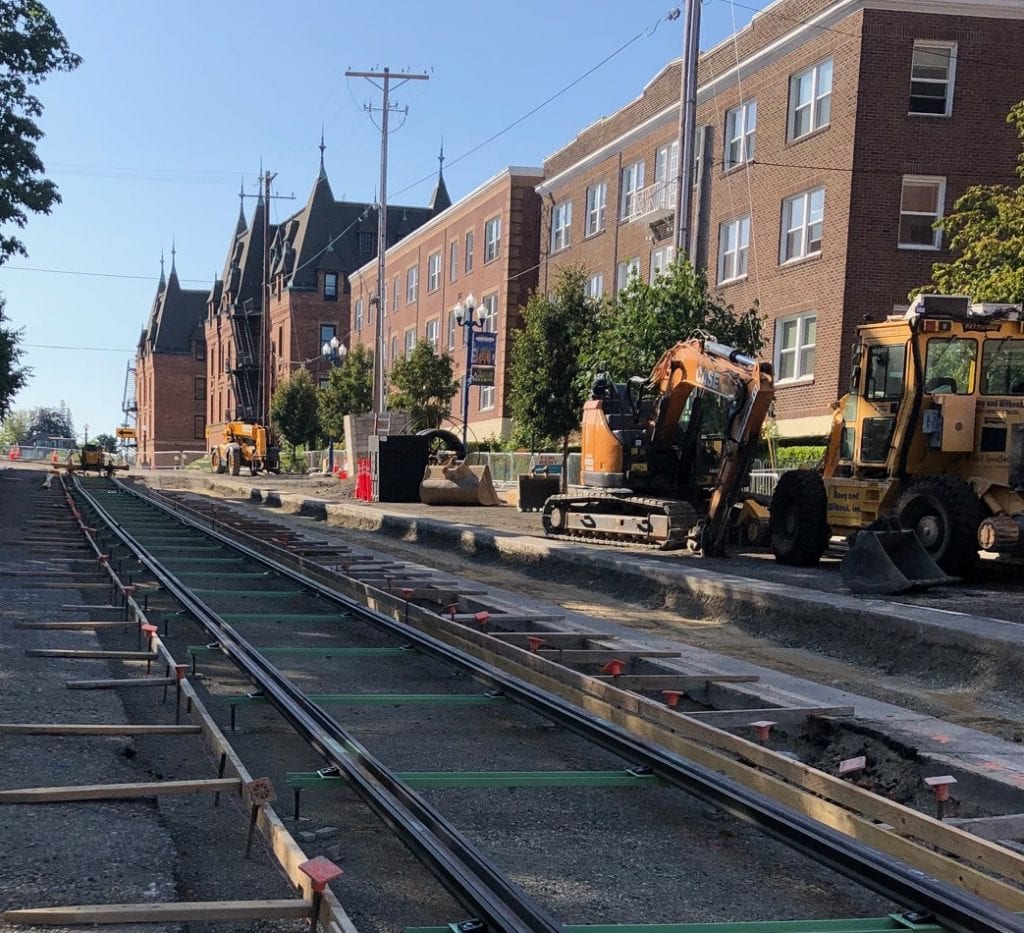
Anyone who rides the Sounder trains around the region or shuttles across town on Link light rail might feel like these mass transit webs are modern amenities. They would be wrong. Regional rail service dates back to statehood itself. Like most aspects of life on the Puget Sound, it also has ties to the rivalry for economic supremacy between Tacoma and Seattle.
Anyone with a working knowledge of local history will remember that Tacoma outpaced the backwater of Seattle during the 1870s, particularly after the Northern Pacific Railroad selected the City of Destiny as the terminus for its transcontinental railroad in 1873.
Seattle feared that it would be cut off from the rest of the economic boom in the growing West Coast if it didn’t have rail service to bring settlers – and their dollars – to the Emerald City and to shuttle its lumber and products to markets back East. That changed when Henry Villard gained controlling shares of the Northern Pacific and pledge to run rails between Tacoma and Seattle, where he just happened to have significant real estate holdings he was interested in selling.

Seattle’s savior even declared in October 1881 that: “Within 12 months of today, an unbroken railroad from St. Paul to Tacoma to Seattle” would operate. Things did not go exactly as planned.
The Puget Sound Railroad Co. was formed to run a railroad line from Renton to Stuck Junction (Auburn), the connection point to the Northern Pacific in mid-1882, a full year before the final spike pierced the soil on the rail lines between the Midwest and Tacoma. But clouds were forming. Villard’s investments were strained.
Stock prices in Villard’s investments and companies were tumbling with the pressure of delays and cost overruns. He would soon resign as president of the Northern Pacific, which soon abandoned work on the Seattle to Tacoma route as a way to save money the company could no longer afford to spend. The railroad board shuttered the project with just three miles of track left to be laid, a stretch between Titusville (present-day Kent) and Black River Junction (outside of Renton) was left uncompleted. Those tracks would finally open after some reorganizing of the company and the thaw of spring.

The direct rail link between Seattle and Tacoma finally opened with great fanfair on June 17, 1884. It was, however, constructed as cheaply as possible and had few amenities that controlled operating costs. The tracks, for example, didn’t allow the trains to turn around in Seattle, so the entire trip back to Tacoma had to be done in reverse. The track was so cheaply run that travelers revolted with complaints to Northern Pacific officials. Their response was swift. The company stopped the “Orphan Road,” trains altogether just two months after the tracks opened.
Local residents did not appreciate the strong-armed tactics of the robber barons and turned up the pressure for Congress to revoke the land grants issued to the railroad for running the tracks since, the tracks weren’t running trains. Not wanting to risk a scenario that would lead to giving back free land, the railroad started twice-daily trips between Seattle and Tacoma. Trips were $1.
Despite long layovers and no-frills accommodations, demand was strong – too strong, actually. The trips from Tacoma to Seattle outpaced the return trip, suggesting that Seattle was rapidly becoming the economic center of the region.
“It is a fact that one car of freight is brought to stay at Tacoma, where 10 cars go to Seattle,” said Northern Pacific’s agent James McNaught.
The steam trains would then get an electric sibling in 1902, when the Seattle-Tacoma Interurban Railway started service between Seattle’s Pioneer Square and downtown Tacoma, which had a web of local lines throughout the county. Trains ran every hour at a one-way cost of 60 cents. Trips took about an hour and a half.

The route carried some 3 million passengers a year at its peak 15 years later. The Federal Aid Road Act of 1916, doomed rail service around the Puget Sound since it set the foundation for cars over tracks. Highway 99 would eventually run from British Columbia to Mexico. One of the last sections of the tracks was the span between Tacoma and Fife because the route included a set of bridges over the Puyallup River.
The streetcars would lose out to the rising popularity of cars forcing the company to go bankrupt in 1928. Local and regional rain service would all but disappear for 70 years, until voters approved the creation of Sound Transit in 1996 to build a mass transportation system between the Puget Sound’s hubs.
The first Sounder trains rolled between Seattle and Tacoma four years later, almost a century after commuter trains did it the first time. Local streetcars are now being installed on the same routes where the rails were torn up to give way to America’s love for the automobile.













































